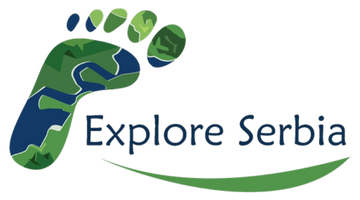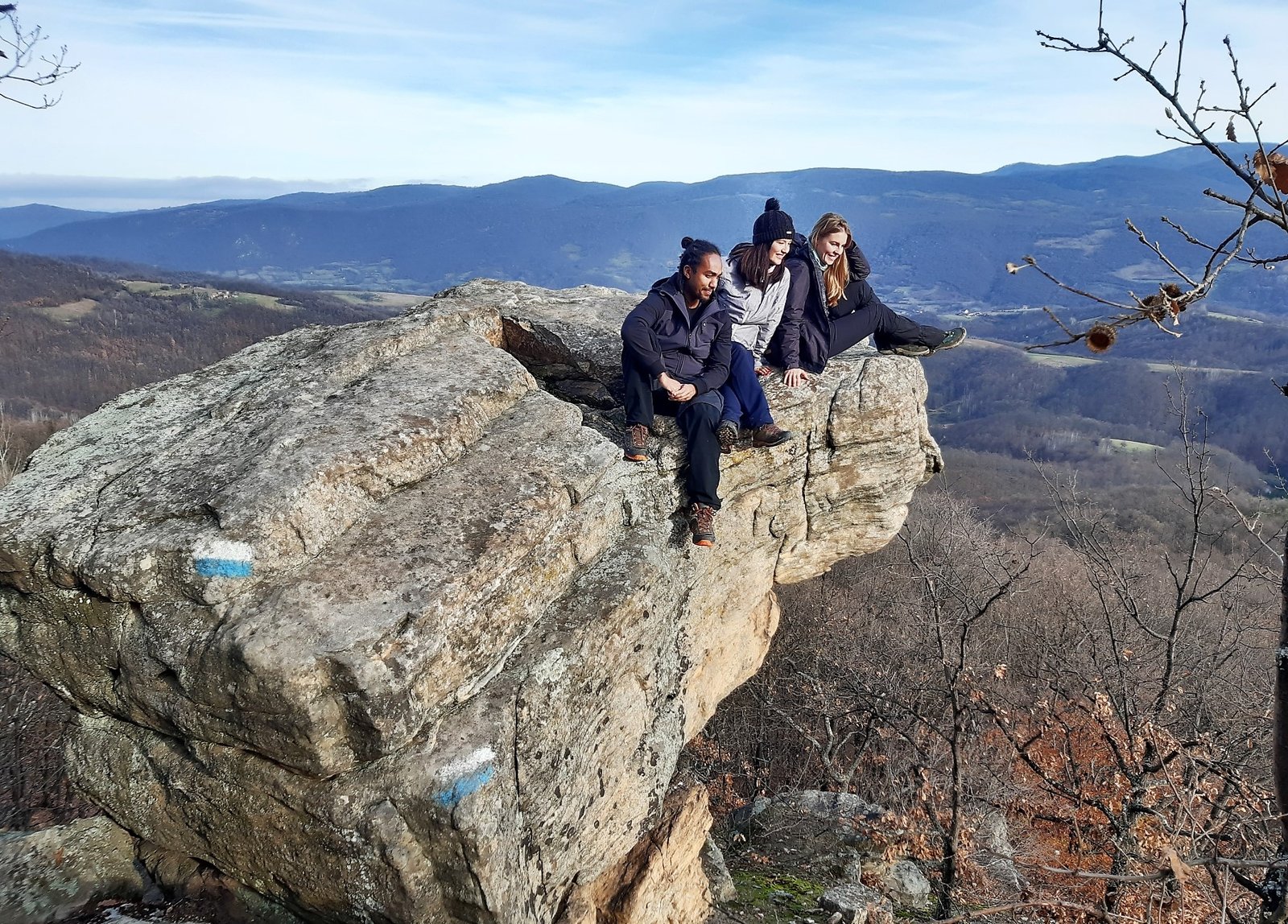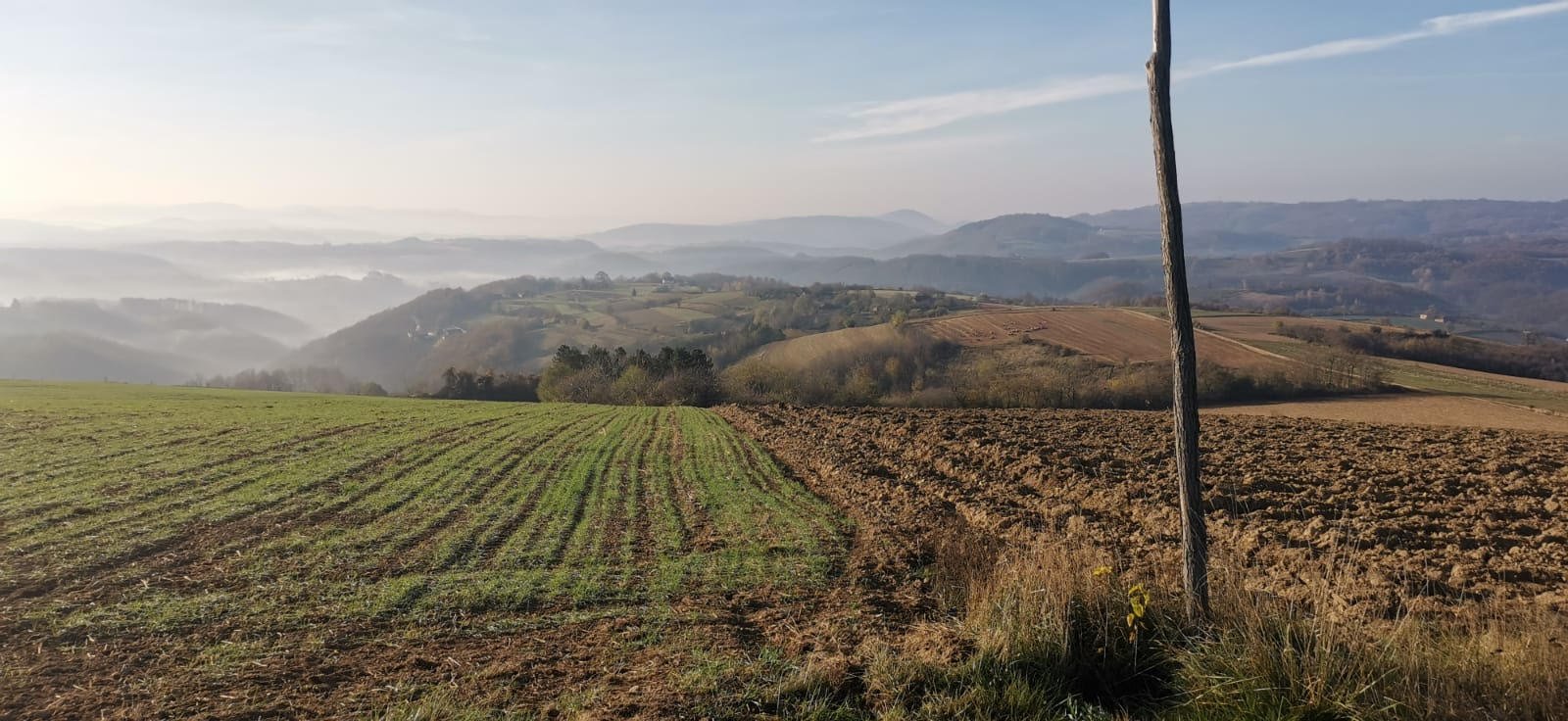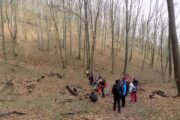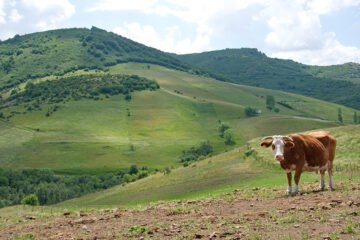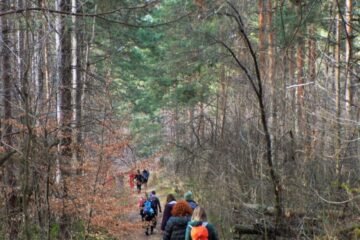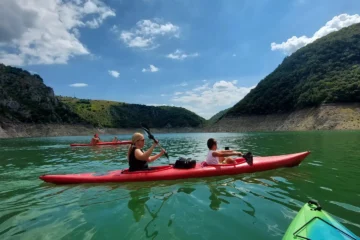On the slopes of Beljanica, between Homolje and Gornja Resava, on the border between the villages of Lipovica, Bliznak and Krupaja, there is a unique viewpoint the Lord's Stone or the Lord's Chair, on which the despot Stefan, according to legend, developed warfare strategies and from which he watched his soldiers as they trained for knightly combat.
On this tour we will get to know Orthodox art, the basic characteristics of the "Moravian and Raška school", which are united in exceptional harmony in Manasija monastery. We will touch the land of our ancestors and move toward The Lord's Stone from where, according to tradition, the despot Stefan watched over his army and drew inspiration for creative creations and military exploits. The chosen hiking trail will give us an insight into the dividing line between the Braničevo district and Pomoravlje, from whose vantage points the view reaches Beljanica, Homolje and Kučaj mountains.
| DEPARTURE LOCATION | Novi Sad, Merkator Shopping center
The parking lot at the municipality New Belgrade |
| DEPARTURE TIME | 5.00h Novi Sad
6.30h Belgrade |
| INCLUDED IN THE PRICE | Transportation from Belgrade
Hiking tour to the Lord's Stone A guide and the tour organization Accident insurance |
| NOT INCLUDED | Lunch
Transportation from Novi Sad Other individual costs |
Additional notes:
- Equipment for the Lord's Stone and Manasija tour: Deep hiking shoes or sports sneakers with a stronger sole, backpack, layered clothing, adapted to weather conditions, bring enough water and some food (snacks, sandwiches, fruit).
- Information about a hiking trail:
- Length: 15 km
- Total ascend/descend: around 200 m
- Category: easy
- Duration: about 5 hours with breaks
- A minimum of 18 registrants is required for the Lord's Stone and Manasija tour.
- Price is for members of "Explore Serbia". You can find membership information here. For those who do not have a membership card, the price is 4700 dinars.
- Transportation from Novi Sad: the surcharge is 1200 dinars. Another option is to take the train to the Novi Beograd railway station, where you can wait for our transport. You can see the timetable here.
- Own transportation: in case you come with your own transport, the price of the tour is 2400 dinars (with Explore Serbia membership cards) or 3400 dinars (for those who do not have a membership card).
- Accident insurance: in order for this type of insurance to be active, you need to send us your personal number (JMBG) when registering.
- In case of an insufficient number of registered passengers or unfavorable weather conditions, the deadline for notification of the postponement or cancellation of the tour by the organizer is 2 days before departure.
Nearby attractions
Manasija Monastery
According to a culture based on the Orthodox ethos, the heart is the only organ where God can dwell. God, the king of the uncreated realm, cannot be accommodated by the whole universe, but the metaphysical heart can. That is the secret of the human heart. That despot Stefan thought deeply about this secret and raised his heart to God is evidenced by his endowment Resava Monastery.
Church of the Holy Trinity in Resava Monastery, better known as Manasija, it was built as a mausoleum of one of the most important Serbian rulers, the despot Stefan Lazarevic, the son of Prince Lazar who made a choice worthy of the Heavenly Emperor and Princess Milica, called Evgenia and Efrosinia in the monastic tradition.
The temple in Resava is dedicated to the Descent of the Holy Spirit on the apostles (Spirits), which is known by the name Holy Trinity. Only rarely did any ruler dare to build a church for Christ personally and dedicate it to an event from his life.
Despot Stefan was an exceptional personality. He was born in 1377 and it was not without reason that his father gave him the titular name of Serbian ruler, Stefan, and his mother was of noble origin from Nemanjić. Thus, in a symbolic way, he was predestined to be a ruler already at an early age. Historical sources state that he was highly educated. He was also knight and writer. A great statesman and military leader. Enlightener and builder. He built schools, libraries, churches, monasteries, hospitals. Despot Stefan had a gift for politics and diplomacy, as well as for literature.
A great statesman and military leader. Enlightener and builder. He built schools, libraries, churches, monasteries, hospitals. Despot Stefan had a gift for politics and diplomacy, as well as for literature. He was closer to monks and hermits, and everything he left behind, in a literary sense, is comparable to the works of monks, learned people of the late Middle Ages. His most significant work is the literary epistle "The Letter of Love", which is assumed to have been addressed to his brother Vuk, and is also read as a hymn to Love. In accordance with the traditions of the era, but also of his own Serbian heritage, the despot Stefan was the protector of culture and the initiator of literary renewal in Serbia. The Resava school in the Manasija monastery was the center of copying and translation activities during the despot's time.
Illuminated in gold and ultramarine blue, decorated with floral patterns and shapes that symbolize infinity, Manasija is one of the top achievements of the Serbian medieval state. The specialty of the monastery is the fortification, which was designed according to all the rules of medieval fortification, and built with the aim of defending the monastery settlement.
The city and the monastery in it, in one word Manasija, emphatically nurtures the cult of the Holy Warriors, which is connected to Serbia in the 14th and 15th centuries, when the earthly Christian armies were powerless. The personification of Christian chivalry is manifested through the Christ-like figures of the Holy Warriors Areta, Nestor and Nikita, recognizable symbols of Manasia. Refined aesthetics can also be seen in other frescoes such as the Parable of the Rich Man and the Poor Lazarus. There is also a unique founding composition on which the despot Stefan is represented representatively and elegantly with symbols of the ruler's dignity.
This sacral building, perhaps, stands at the beginning of a new fourth stylistic direction which, unfortunately, could not develop due to the fall of Serbia under the rule of the Ottoman Empire.
Resava area
Resava area was named after the Resava river, which originates at Kučaj mountains, at an altitude of 1100 meters. At the very beginning of its course, the Resava flows through a dense beech forest - Vinatovača rainforest. Further, it flows through the municipalities of Despotovac and Svilajnac and flows into Velika Morava.
Beljanica mountain
Beljanica mountain with the highest peak of 1339 meters, separates Resava from Homolje. Its karst composition caused the formation of many sinkholes, pits, coves and caves. The central plateau of the mountain is bare, but that's why the slopes are covered with beech and oak forests, which are occasionally of the rainforest type. In the shadows of large trees, there are plenty of mushrooms, especially boletus. From the depths of the mountain, ten kilometers east of Manasija, you enter the world-famous Resava cave, the opening of which was discovered only in 1962. The reason for this is the dense vegetation that surrounds this natural beauty.
On the slopes of Beljanica there is a unique viewpoint, the Lord's Stone, which played a significant role in the history of this part of eastern Serbia, since it is part of the road connecting Resava and Mlava.
The organizer of the tour is the travel agency Explore Balkans doo. With this program is valid Rulebook on conducting tours by Explore Balkans doo.
According to Article 79 of the Law on Tourism, protection is not provided for one-day tours in terms of travel guarantees.
Belgrade - Manasija Monastery
- Departure from Novi Sad at 5.00 am
- Departure from Belgrade at 6.30 am
- Traveling by highway via Svilajnec and Despotovac to Manasija Monastery. A 30-minute break on the way for coffee and breakfast.
- A tour of the Manasija Monastery and getting to know the history and culture of one of the largest spiritual centers in Serbia.
- After visiting the monastery, a short drive to the village of Lipovica and the starting point of the hike.
The Lord's Stone hiking tour
- Hiking tour from the village of Lipovica. The tour starts at about 450 m above sea level. The path passes partly through a beech forest, but also through clearings from which you can see the surrounding mountains. There are also two sources of drinking water along the way.
- After 1 km of hiking you will reach Veliko Brdo viewpoint. We continue to the Lord's Stone viewpoint, from which we will have wonderful views of the Homolje mountains, Beljanica, Kučajske mountains and, if the visibility is good, even up to Kopaonik. We will also see the valley of the Krupaja River and the villages of Krupaja and Bliznak.
- The Lord's Stone had a significant role in the history of this part of eastern Serbia, since it is part of the road connecting Resava and Mlava. From this location could be defended the old fortified town of Ždrelo, a gem of the Serbian heritage in Gornjačka gorge.
- Information about a hiking trail: the trail is circular, about 15 km long, with an ascent and descent of about 150 m, duration is about 5 hours with breaks. The tour belongs to the easy category.
Eco farm Milanović
- After the hike, we visit and have a late lunch at eco farm Milanović. A family farm that represents a real natural oasis, far from the busy and urban civilization. The water from the source comes directly to the farm, there is no air, sound or other pollution. They offer organic and bio food.
- Return to Belgrade in the evening until 20.30.

